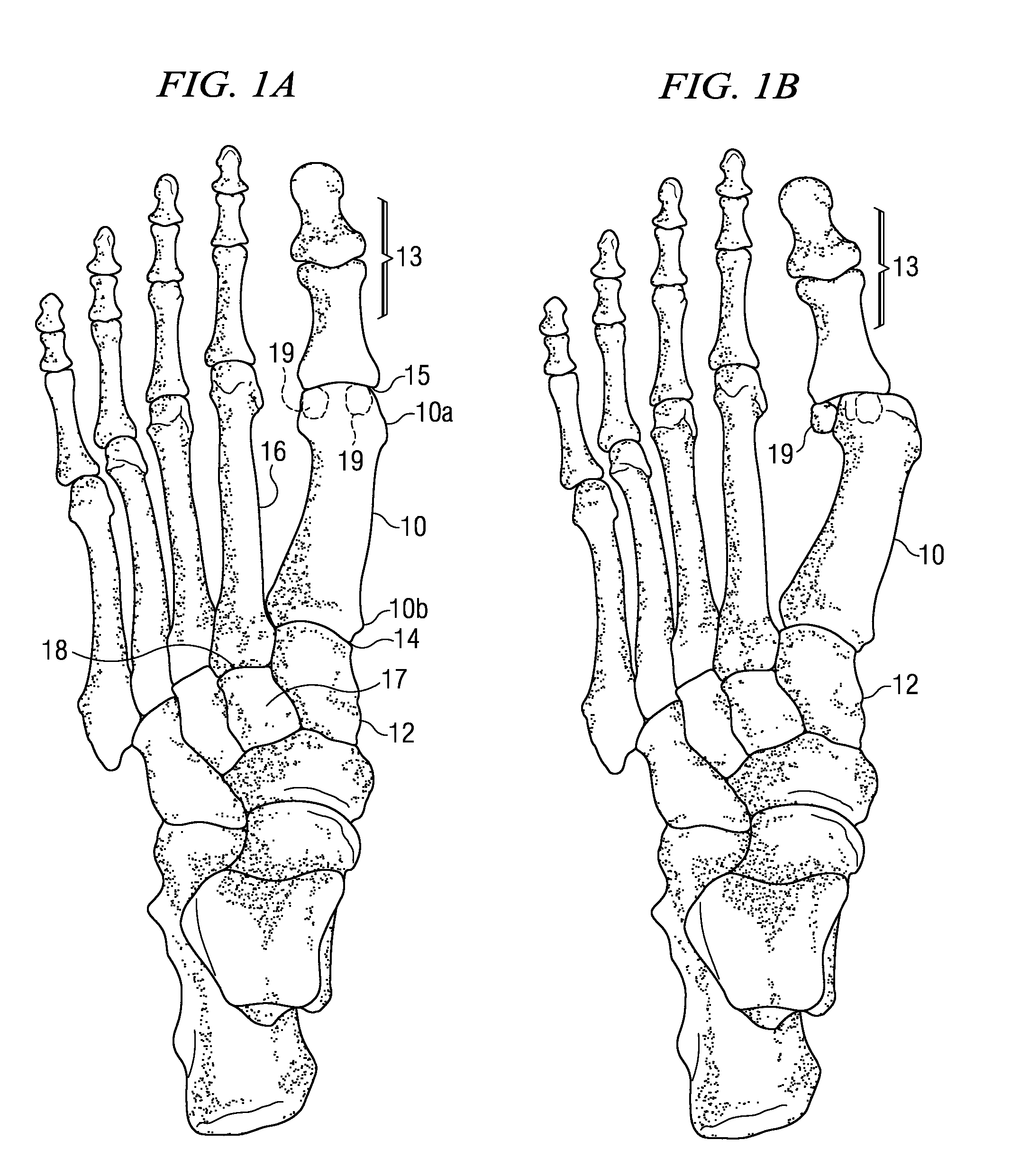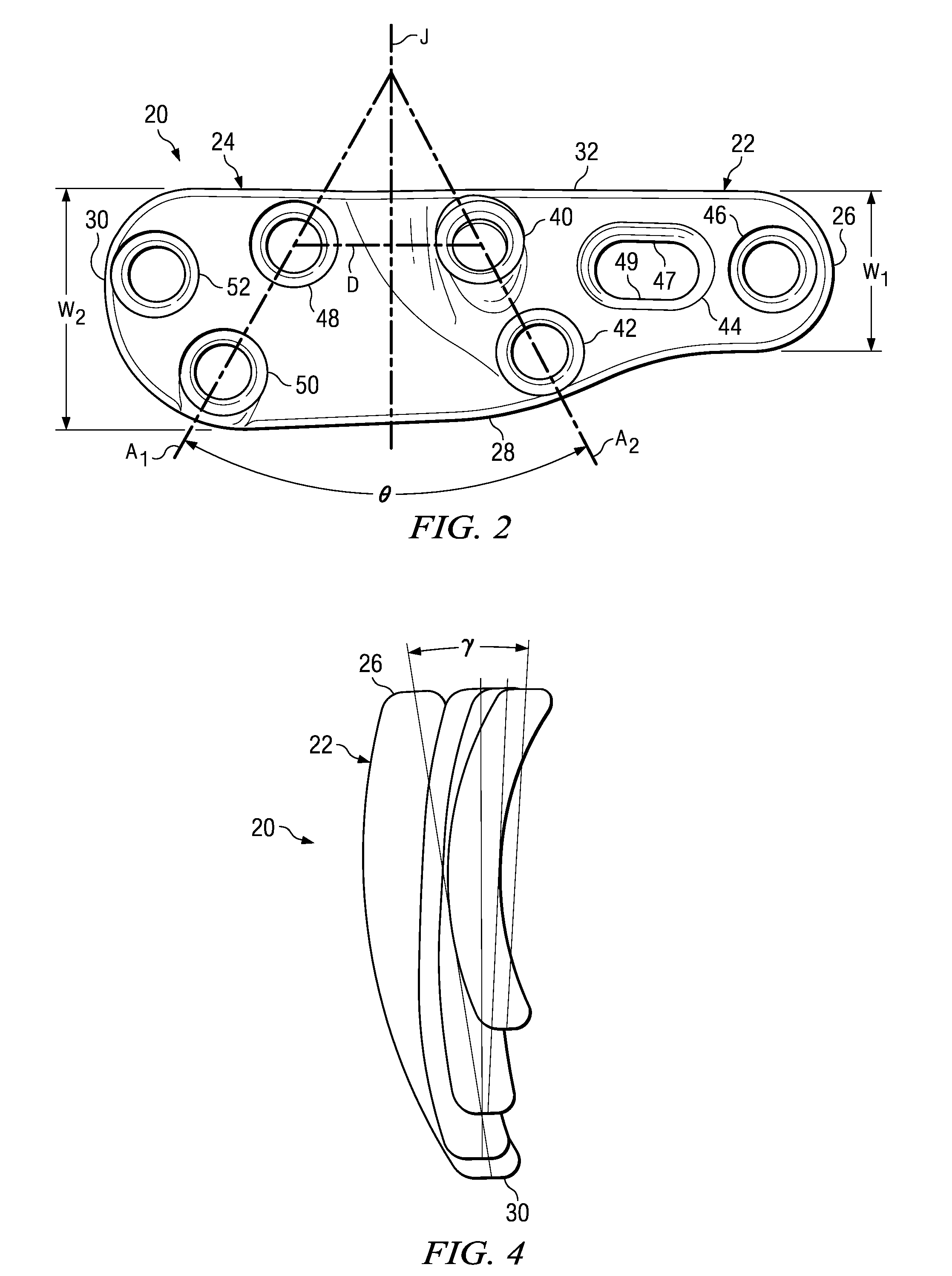Fixation plate for use in the lapidus approach
a technology of fixation plate and lapidus, which is applied in the field of medical devices, can solve the problems of pain in the big toe joint, difficulty in fitting footwear, etc., and achieve the effect of maintaining desired multi-planar stability
- Summary
- Abstract
- Description
- Claims
- Application Information
AI Technical Summary
Benefits of technology
Problems solved by technology
Method used
Image
Examples
Embodiment Construction
[0023]Various aspects of a Lapidus plate and methods of using same according to the present disclosure are described. It is to be understood, however, that the following explanation is merely exemplary in describing the devices and methods of the present disclosure. Accordingly, several modifications, changes and substitutions are contemplated.
[0024]A Lapidus plate 20 for a human left foot according to the present disclosure is illustrated in FIG. 2. It is to be appreciated that a Lapidus plate according to the present disclosure for a human right foot would be substantially similar to and have a mirror image configuration of the plate 20 illustrated in FIG. 2. The plate 20 generally comprises a distal portion 22 for attachment to a metatarsal and a proximal portion 24 for attachment to a cuneiform. For purposes of illustration only, the distal and proximal portions 22, 24 are divided along a joint axis (J) generally corresponding to the fusion site (i.e., the interface between the ...
PUM
 Login to View More
Login to View More Abstract
Description
Claims
Application Information
 Login to View More
Login to View More - R&D
- Intellectual Property
- Life Sciences
- Materials
- Tech Scout
- Unparalleled Data Quality
- Higher Quality Content
- 60% Fewer Hallucinations
Browse by: Latest US Patents, China's latest patents, Technical Efficacy Thesaurus, Application Domain, Technology Topic, Popular Technical Reports.
© 2025 PatSnap. All rights reserved.Legal|Privacy policy|Modern Slavery Act Transparency Statement|Sitemap|About US| Contact US: help@patsnap.com



